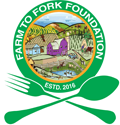Integrated application of banana peduncle-derived biochar and fertilizer affect soil physicochemical properties and plant nutrient uptake
DOI:
https://doi.org/10.5455/faa.64828Keywords:
Banana peduncle biochar, fertilizer, plant nutrition, pyrolysisAbstract
Spreading banana peduncle residues in banana plantations to enhance soil physicochemical properties is common practice and has also been identified as vector of mealybug re-infestation. This greenhouse study was conducted to assess the effects of banana peduncle-derived biochars produced at pyroly- sis temperatures of 300°C (BC300) and 500°C (BC500), and their combination with inorganic fertilizer on soil nutrient status, plant growth and nutrient up- take in banana plantlets grown in soil-filled polythene bags. Six treatments; control–no input, 30 g BC300, 30 g BC500, 30 g inorganic fertilizer, 15 g BC300 + 15 g inorganic fertilizer, and 15 g BC500 + 15 g inorganic fertilizer were applied. BC300 had significantly higher yield, volatile matter, nitrogen and moisture content, whereas pH, fixed C, Ca, K and ash contents were lower as compared to BC500. Post-planting soil parameters (pH, organic C, available P, exchangeable K, Mg, and ECEC) increased significantly for the biochar treatments (BC300 and BC500) as compared to control and pre-planting soil. Integrated biochar and inorganic fertilizer significantly increased organic carbon and pH as compared to inorganic fertilizer alone. Significant negative correlations demonstrated the effects of sole biochar on soil C/N ratio and pH, which might have reduced nutrient (N and K) uptake and accumulation in banana leaves, while pH also affected leaf Mg. Principal Component Analysis (PCA) also revealed greater leaf nutrient uptake and accumulation in relation to inorganic fertilizer input alone or in combination with biochar, as compared to biochar alone. The combination of biochar with reduced-dose of fertilizer enhanced the potency of the inorganic fertilizer with BC500 as the most effective.
Downloads
Downloads
Published
How to Cite
Issue
Section
License
Copyright (c) 2019 by the author(s). This work is licensed under a Creative Commons.

This work is licensed under a Creative Commons Attribution-NonCommercial 4.0 International License.




















